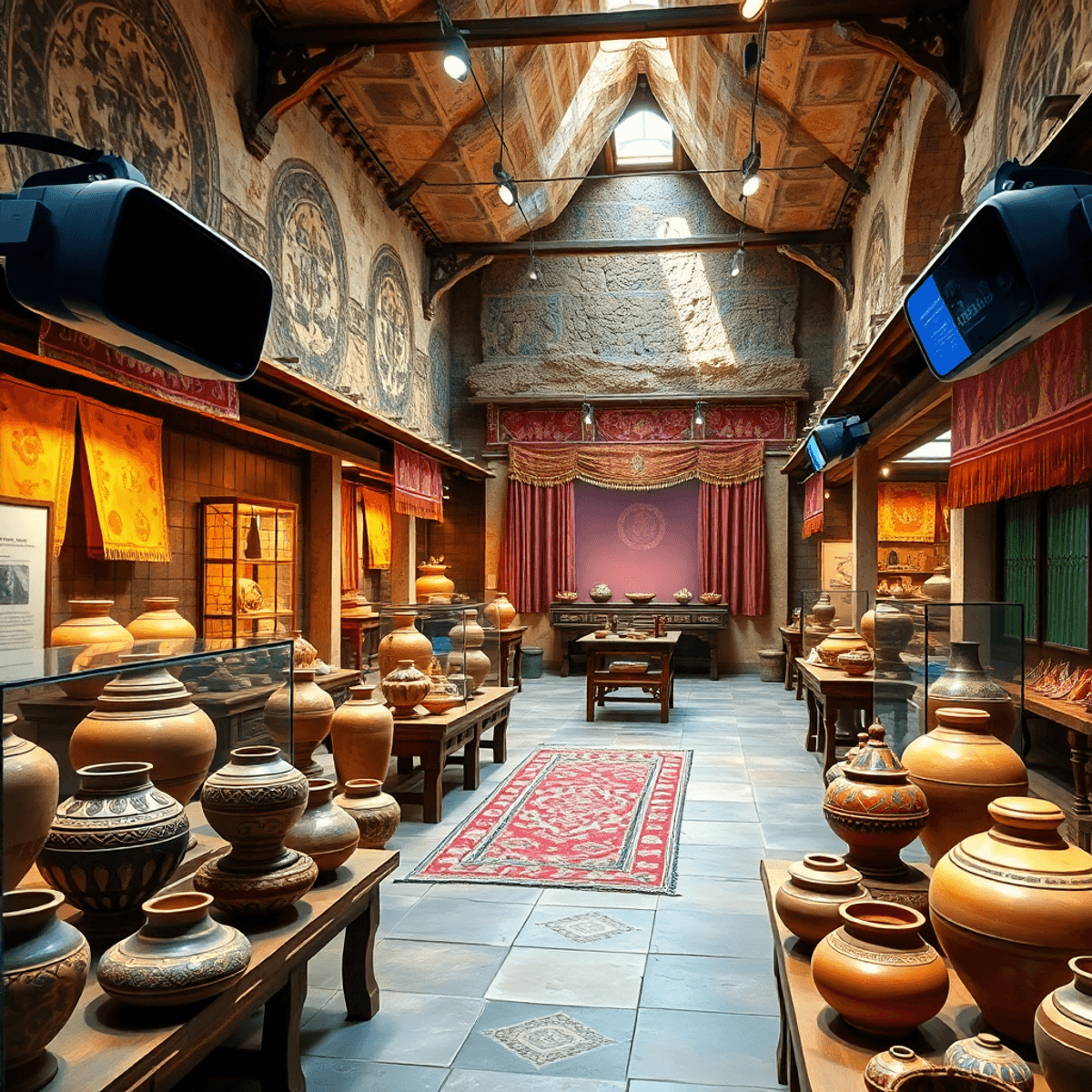
The Niya site is a place full of history. It used to be a busy trading center on the Silk Road, and now it gives us valuable information about ancient cultures and how they interacted. The artifacts found in Xinjiang tell us stories about a time when different communities came together.
Now, we have virtual reality to help us. This new technology is changing the way we visit museums, making it possible for us to connect with history in ways we never could before. With the use of immersive features, exhibitions can showcase artifacts in exciting and meaningful ways that really speak to people.
Technology is also helping different cultures connect with each other. It removes obstacles and brings places like Shanghai and Xinjiang closer together. These kinds of projects not only promote understanding but also honor the diverse experiences of humanity. Thanks to virtual reality, we can now easily access the past and encourage everyone to discover and value it.
The Niya site is an important archaeological site in the Xinjiang region. It dates back to ancient times and was strategically located along the Silk Road, making it a busy trading post and cultural meeting point.
The site reveals layers of history, showcasing how diverse cultures interacted over centuries. Excavations have unearthed remnants of an ancient bazaar, bustling with trade and cultural exchange.
Significant findings include pottery, textiles, and tools that provide insights into daily life in ancient societies. These artifacts are crucial for understanding social structures, economies, and belief systems of the time.
This institution plays a vital part in preserving these treasures. By meticulously curating and displaying artifacts from Niya, it fosters appreciation among visitors. The museum not only safeguards history but also educates the broader public about the rich heritage of Xinjiang.
Through these efforts, the Niya site’s legacy continues to thrive, connecting past civilizations to contemporary audiences.
Technology has completely changed the way museums operate. Instead of just looking at exhibits, visitors can now actively participate and engage with the displays. Here are some ways technology has made this possible:
These innovations have completely changed how we experience culture and history. They not only help us appreciate the past more but also open up new possibilities for exploration in the future.
The 17-minute virtual reality experience at the Xinjiang Museum transports visitors back to ancient Niya. This groundbreaking project emerged from a collaboration between Alight Digital and Backlight Studio, renowned for their expertise in augmented, virtual, and mixed reality development. With their Oz Immersive technology, they offer an unparalleled “story-living” sensation that elevates the VR experience.
The innovative use of technology creates an engaging narrative. Each interaction invites reflection on historical significance while fostering a connection to cultural heritage. The blend of history and modern technology breaks down barriers, transforming how we perceive ancient artifacts. This immersive journey exemplifies how virtual reality can redefine museum experiences, inviting a new generation to explore and appreciate the past.
Cultural exchange initiatives are vital for bridging diverse regions in China. The Huangpu district, a hub of creativity and commerce in Shanghai, has been instrumental in this regard. Collaborations with the Xinjiang Museum have led to engaging programs that spotlight the rich heritage of Xinjiang.
Jiushi Culture Co Ltd plays a pivotal role in organizing exhibitions that showcase Xinjiang’s cultural treasures. These events feature artifacts, art, and interactive displays, drawing large crowds eager to learn about this often-overlooked region.
The company also focuses on promoting unique merchandise. This includes traditional crafts and contemporary items inspired by Xinjiang’s heritage. Such products not only serve as mementos but also educate visitors about the cultural significance behind each piece.
These initiatives enhance mutual understanding and appreciation between the people of Shanghai and Xinjiang. They create a vibrant dialogue around history, art, and identity. By facilitating these exchanges, Jiushi Culture Co Ltd ensures that the narratives of ancient cultures continue to thrive in modern contexts.
The exhibition introduces tailor-made merchandise that captures the essence of Niya’s rich heritage. Visitors can browse items inspired by ancient artifacts, offering a tangible connection to history. These products serve not just as souvenirs but as educational tools, sparking curiosity about the Niya site.
Educational programs complement this merchandise. Designed to enhance understanding, these initiatives delve into:
Through these offerings, the exhibition fosters a deeper appreciation for Xinjiang’s culture and history. By merging commerce with education, it creates an immersive experience that leaves a lasting impact on visitors.
Virtual reality is reshaping how we experience museums. The exhibition that uses virtual reality to immerse visitors in Niya site artifacts unearthed in Xinjiang exemplifies this transformation.
Explore virtual reality exhibitions to gain a deeper understanding of diverse cultures. This innovative approach not only preserves history but also fosters connections across vast distances. Experience the past in ways previously unimagined. The future of cultural appreciation is here—dive in and discover what awaits.


